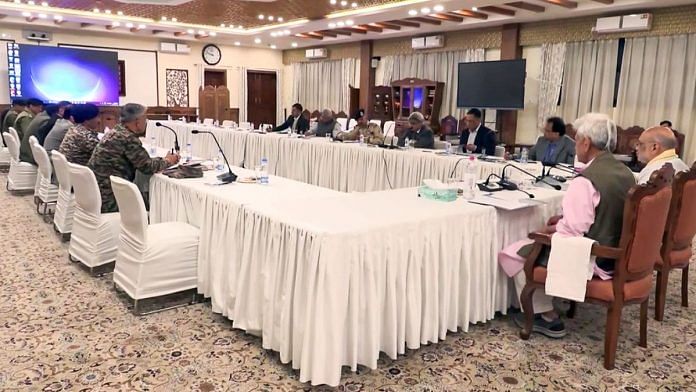An attack waiting to happen
Let there be no doubt that despite its economic travails, Pakistan’s capability to perpetrate a proxy war in Jammu and Kashmir has not diminished nor has its strategy to bleed India with thousand cuts to usurp J&K, changed in any manner. Tactically, it controls the flow of terrorists keeping in view the strategic environment, the mood of the people of J&K and security forces deployment both in terms of counter infiltration and the counter terrorist grid.
To this end, the shifting of focus to south of Pir Panjal due heightened security in Valley after abrogation of Article 370, weakening of our counter terrorist grid in the Rajouri-Jammu-Doda region and the porous International Boundary between Jammu and Pathankot, should have caused no surprise. Increased security presence in urbanised areas and along roads, led the terrorists to shift to forests and higher mountainous areas. The number of terrorists may be fewer, but they are better trained, armed and equipped.
Due to people enjoying the fruits of prosperity post abrogation of Article 370, Financial Action Task Force scrutiny, deteriorating internal security situation and need of IMF loans, Pakistan had kept the number of terrorists between 100-150 with primary focus to the south of Pir Panjal.
There are various factors that led to this attack. Pakistan had to make a statement to show its presence in the Valley lest the people choose the better alternative. India’s narrative of “Naya Kashmir” had to be punctured. Targeting only non Muslims is aimed at triggering violence against coreligionists already under Right wing pressure in the rest of India, to alienate the Muslim majority in J&K. Pakistan blames India for terrorism in Balochistan and Khyber Pakhtunkhwa in cohort with Taliban (Afghanistan), Tehrik-e-Taliban Pakistan and Baloch terrorist organisations. The Bolan Tunnel siege, in which a large number of soldiers and their families were killed, was a big setback for the Pakistan Army. The perceived targeting of Lashkar-e-Taiba and Jaish-e-Mohammed leadership by India is a big embarrassment for ISI and it called for revenge. Last but not least was the increasing unpopularity of the Pakistan Army.
Keeping the above in view, a major terrorist attack should have been anticipated. The presence of police and Rashtriya Rifles counter terrorist grid is road bound and restricted to urbanised areas. The writ of the terrorists runs in the forested and mountainous areas and consequently they get the support of the people living there through coercion. Imagine an area, one hour away from the nearest security deployment which is in Pahalgam and with a daily footfall of 1,500 tourists being left without any police or security forces cover. By all yardsticks, it is a monumental security lapse.
Also read: Pahalgam attack deserves retaliation. India can borrow from US, Israel playbook
Response options
A charged up nation fed on neo nationalism is baying for blood. However, the government must not let public sentiment force a hasty decision. It must be remembered that Pakistan is a nuclear weapon state and it has created adequate conventional capability to absorb any preemptive limited war below the nuclear threshold.
India does not have an overwhelming technological edge in any field—missiles, drones or air/naval power—to carry out retributory surgical strikes with impunity. Pakistan has the capability to respond in a quid pro quo manner and we should be prepared for the same. Having said that, national sentiment demands a retributory response in 48-72 hours.
Immediate retributory response can be in the form of fire assaults, special forces’ raids, air/drone/missile strikes and small-scale operations to capture selected enemy posts across the LoC. These operations lie in the tactical realm and are unlikely to cause major escalation, but quid pro quo actions will follow. Similar operations across the international boundary on targets, such as the Lashkar-e-Taiba and Jaish-e-Mohammed hubs at Muridke and Bahawalpur, would fall in the strategic realm and may trigger escalation to a limited war.
There is adequate space for a short and intense limited war below the nuclear threshold. However, such an option must be exercised preemptively when the adversary least expects it. This is not an immediate retributory option. When restricted to J&K, this option is likely to give a bigger window before nuclear weapons come into play. The ongoing proxy war waged from Pakistan-occupied Kashmir and a terrorist attack of Pahalgam’s magnitude provide enough international justification to exercise this option, which is best timed after snow melts.
If this option is exercised it would be prudent to adopt a strategic defensive posture in the territory outside J&K and declare the same to the world. In 10 days, the LoC can be pushed back 10-15 km to threaten strategic objectives before nuclear weapons come into play. All launch pads used for facilitating infiltration would be captured. This option would force Pakistan to sue for peace as the China-Pakistan Economic Corridor would come under threat.
We must not hastily blow the war bugle, egged on by public sentiment or for short-term political gains. India needs to keep Pakistan on the edge with calibrated execution of a well thought out strategy to strike preemptively, strike decisively and strike repeatedly until the political aim is achieved.
Lt Gen H S Panag PVSM, AVSM (R) served in the Indian Army for 40 years. He was GOC in C Northern Command and Central Command. Post retirement, he was Member of Armed Forces Tribunal. Views are personal.
(Edited by Theres Sudeep)
var ytflag = 0;
var myListener = function() {
document.removeEventListener(‘mousemove’, myListener, false);
lazyloadmyframes();
};
document.addEventListener(‘mousemove’, myListener, false);
window.addEventListener(‘scroll’, function() {
if (ytflag == 0) {
lazyloadmyframes();
ytflag = 1;
}
});
function lazyloadmyframes() {
var ytv = document.getElementsByClassName(“klazyiframe”);
for (var i = 0; i < ytv.length; i++) {
ytv[i].src = ytv[i].getAttribute('data-src');
}
}








